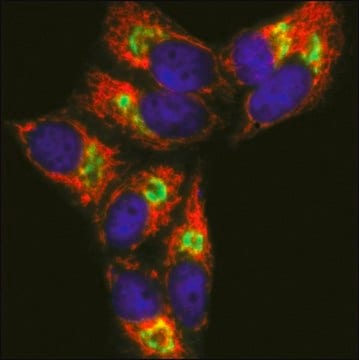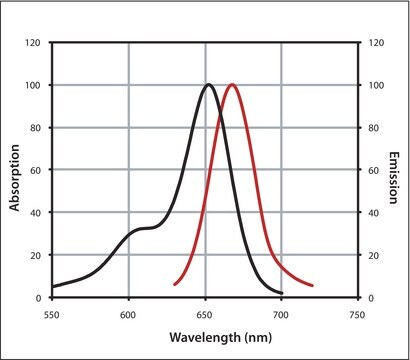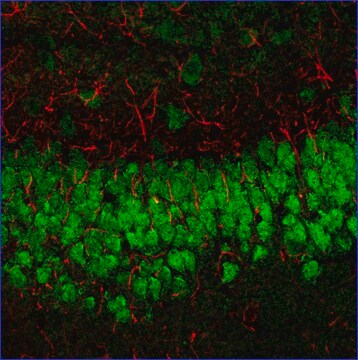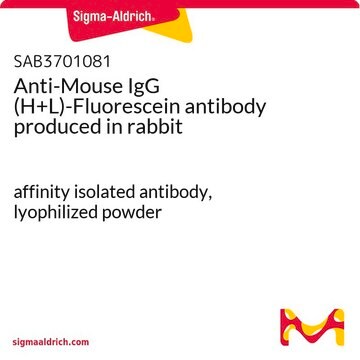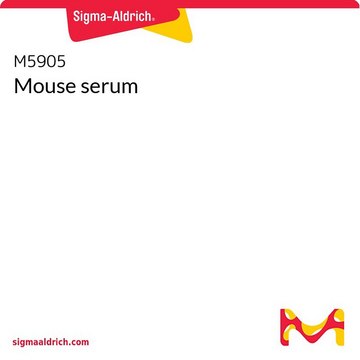SAB4600141
Anti-Rabbit IgG (H+L), highly cross-adsorbed, CF™ 633 antibody produced in goat
~2 mg/mL, affinity isolated antibody
About This Item
Produtos recomendados
fonte biológica
goat
conjugado
CF™ 633 conjugate
forma do anticorpo
affinity isolated antibody
tipo de produto de anticorpo
secondary antibodies
clone
polyclonal
forma
buffered aqueous solution
reatividade de espécies
rabbit
concentração
~2 mg/mL
técnica(s)
flow cytometry: 1-10 μg/mL
immunocytochemistry: suitable
immunohistochemistry: suitable
indirect immunofluorescence: 1-10 μg/mL
fluorescência
λex 630 nm; λem 650 nm
Condições de expedição
dry ice
temperatura de armazenamento
−20°C
modificação pós-traducional do alvo
unmodified
Descrição geral
CF™ dyes are a series of highly water-soluble fluorescent dyes, with wavelength extended over the visible and near-infrared (IR) spectrum for labelling biomolecules, mainly proteins and nucleic acids. Primary structure of the CF™ dyes is either cyanine dyes or rhodamine dyes. CF™ 633 produce the brightest antibody conjugates among spectrally similar dyes when excited by the 633nm He-Ne laser or the 635nm red diode laser. The most important advantage of CF™ 633 is its excellent photostability. Molecular weight of CF™ 633 is ~820 and its absorption/emission maxima is at 630/650nm.
Especificidade
Imunogênio
Características e benefícios
forma física
Nota de preparo
Informações legais
Exoneração de responsabilidade
Not finding the right product?
Try our Ferramenta de seleção de produtos.
Código de classe de armazenamento
10 - Combustible liquids
Classe de risco de água (WGK)
WGK 2
Ponto de fulgor (°F)
Not applicable
Ponto de fulgor (°C)
Not applicable
Certificados de análise (COA)
Busque Certificados de análise (COA) digitando o Número do Lote do produto. Os números de lote e remessa podem ser encontrados no rótulo de um produto após a palavra “Lot” ou “Batch”.
Já possui este produto?
Encontre a documentação dos produtos que você adquiriu recentemente na biblioteca de documentos.
Nossa equipe de cientistas tem experiência em todas as áreas de pesquisa, incluindo Life Sciences, ciência de materiais, síntese química, cromatografia, química analítica e muitas outras.
Entre em contato com a assistência técnica
